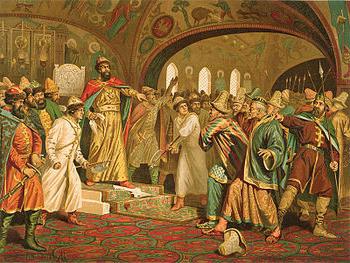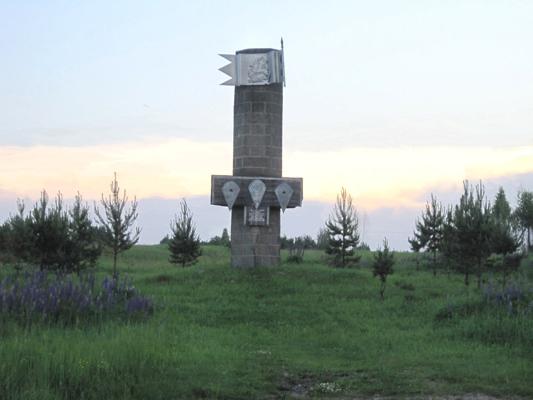Standing on the Ugra led to the liberation of Russia from the Mongol yoke. The country not only freed itself from heavy tribute, but also a new player appeared in the European arena - the Moscow kingdom. Russia became free in its actions.
In the second half of the 15th century, the position of the Golden Horde was significantly weakened by internecine strife. The treasury of the state, which was replenished only with Moscow tribute and raids on neighboring states, was practically empty. The weakness of the Horde is evidenced by the raid of the Vyatka earlings on the capital - Sarai, which was completely looted and burned. In response to the impudent raid, Khan Akhmat began to prepare a military campaign to punish the Russians. And at the same time and replenish the empty treasury. The result of this campaign was the Great Standing on the Ugra River in 1480.

In 1471, at the head of a huge army, Akhmat invaded the borders of Russia. But all the crossings over the Oka River were blocked by Moscow troops. Then the Mongols besieged the border town of Aleksin. The assault on the city was repulsed by its defenders. Then the Tatars overlaid the wooden walls with brushwood and straw, and then set them on fire. The Russian troops, standing on the other side of the river, did not come to the aid of the burning city. After the fire, the Mongols immediately went to the steppes. In response to Akhmat’s campaign, Moscow refused to pay tribute to the Horde.
Ivan III led an active foreign policy. A military alliance was concluded with the Crimean Khan Mengli Giray, with whom the Horde waged a protracted struggle. Civil wars inside the Golden Horde allowed Russia to prepare for a general battle.
Akhmat picked up the moment for a trip to Russia very successfully. At this time, Ivan III fought with his brothers Boris Volotsky and Andrei Bolshoi, who were against the increase in power of the Moscow prince. Part of the forces was diverted to the Pskov land, where a struggle was waged with the Livonian Order. The Golden Horde also entered into a military alliance with the Polish king Casimir IV.
In the fall of 1480,
Khan Akhmat entered the Russian land with a large army. In response to the invasion of the Tatars, Ivan III began to concentrate troops near the banks of the Oka River. In late September, the Tsar’s brothers stopped fighting with Moscow and, having received forgiveness, entered the army of the Prince of Moscow. The army of the Mongols moved through the vassal Lithuanian lands, intending to join forces with Casimir IV. But he was attacked by the
Crimean Tatars, and could not come to the rescue. Tatars began to prepare for the crossing. The place was chosen on a 5-kilometer stretch at the confluence of
the Ugra and Rosvyanka rivers. The battle for the crossing began on October 8 and lasted four days. At this time, for the first time, Russian troops used artillery. The Mongol attacks were repelled, they were forced to retreat a few miles from the river, and the Great Standing on the Ugra began.
The negotiations did not lead to any results. Neither side wanted to concede. Ivan III tried to drag out time. Standing on the Ugra River continued, no one decided on active hostilities. The Mongols, carried away by the campaign, left their capital without cover, and a large detachment of Russians moved towards it. Frosts that began at the end of October made the Tatars experience a great shortage of food. Frosts also led to the formation of ice on the river. As a result, Ivan III decided to withdraw the troops a little further to Borovsk, where there was a convenient place for the battle.

Standing on the Ugra for an outside observer would have seemed the indecision of the rulers. But the Russian Tsar simply did not need to transfer his troops across the river and spill the blood of his subjects. The actions of Khan Akhmat showed his insecurity in his own abilities. In addition, the backwardness of the Mongols in armament was clearly manifested. Russian troops already had firearms, and also used artillery to protect crossings.
The great standing on the Ugra led to the official liberation of Russia from Mongol rule. Khan Akhmat soon was killed in his own tent by the envoys of the Siberian khan Ibak.